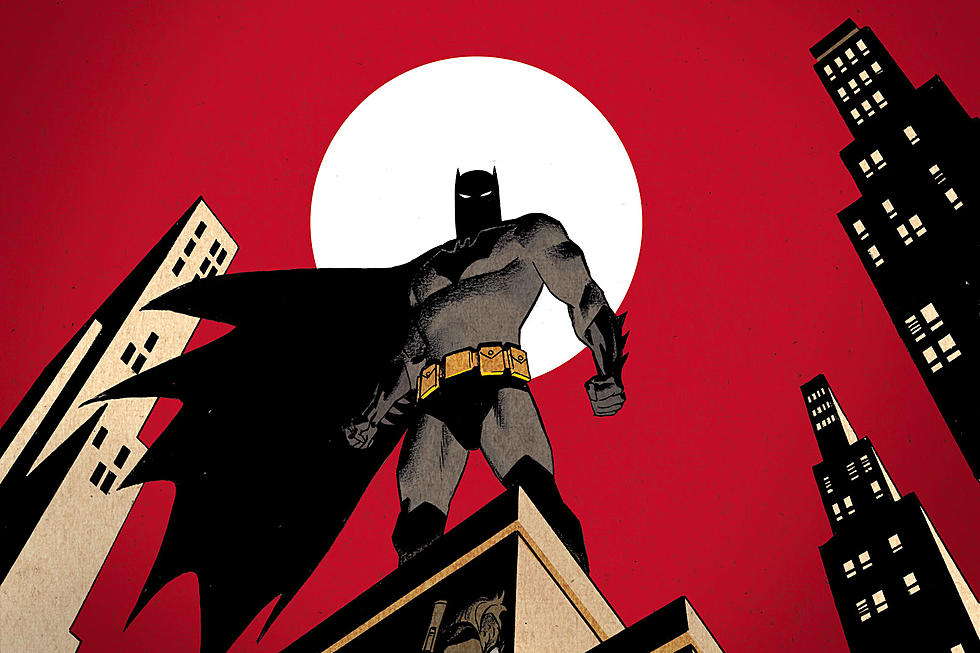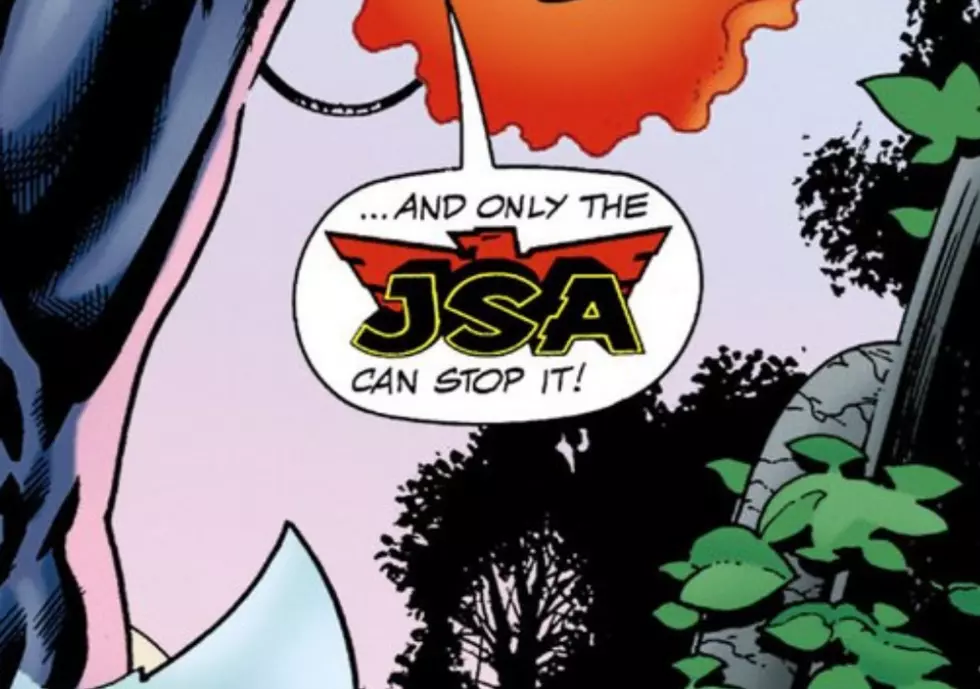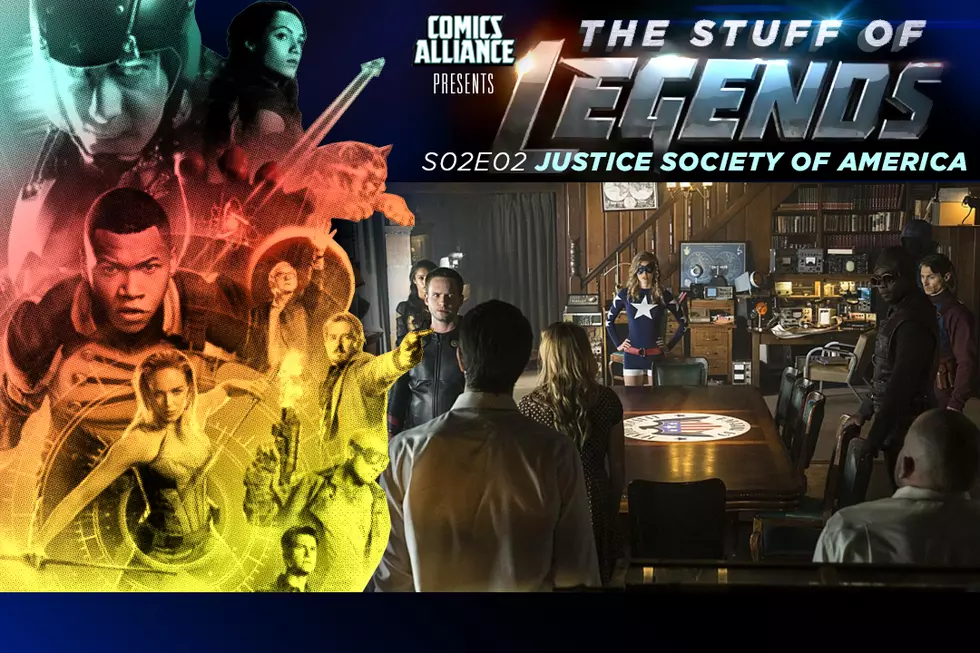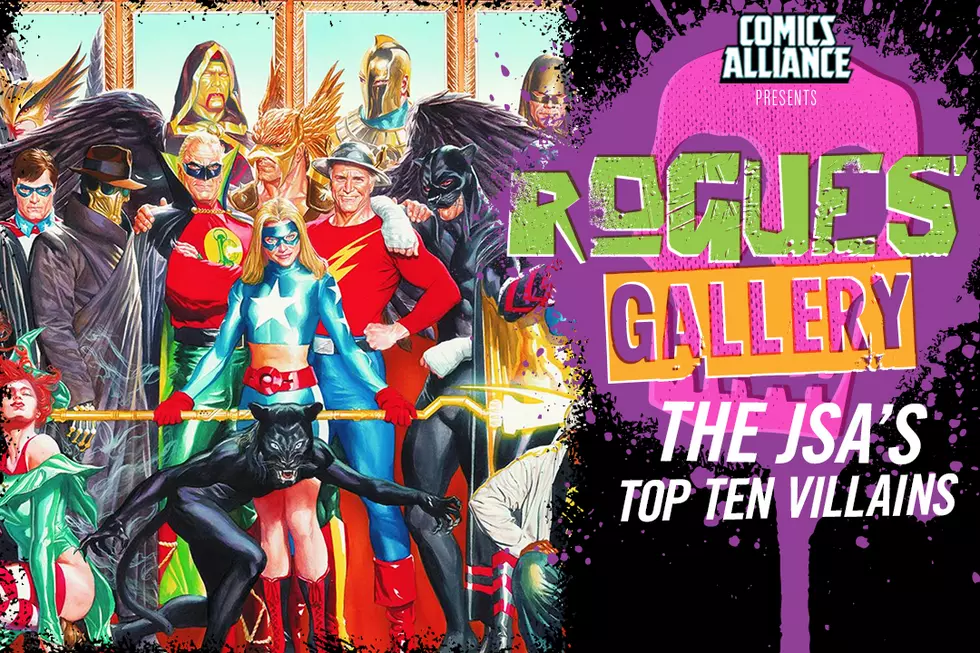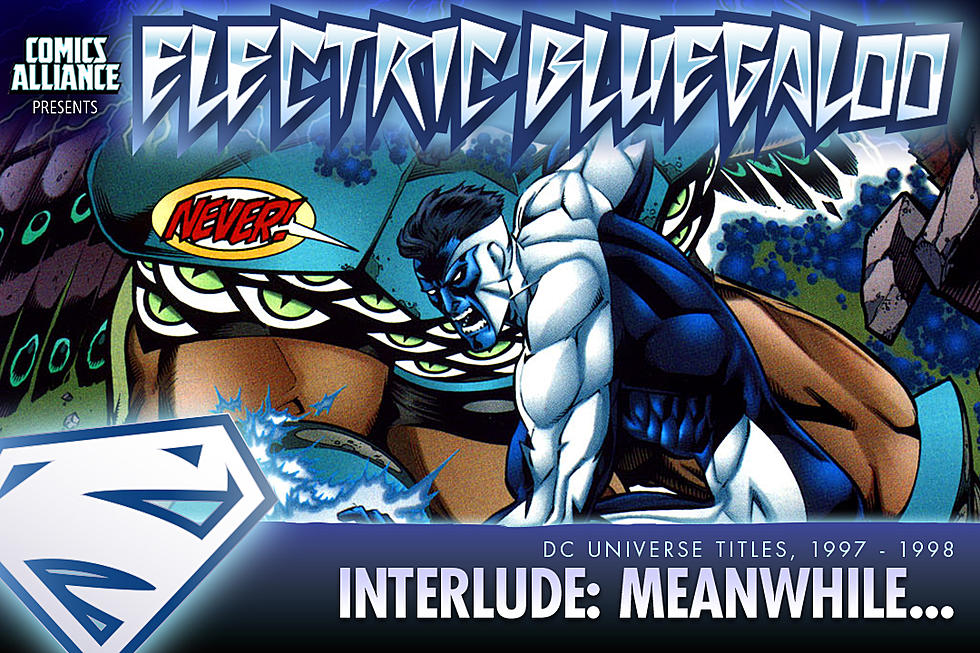
Ask Chris #276: Menace To The Justice Society
Q: Why is the Justice Society of America of such fundamental importance to the DC Universe? -- @M_Morse
A: I've been doing this column for a pretty long time, and almost every week, I get a question like this one, where the question itself assumes a pretty specific premise. Sometimes, they go as far as actually answering the question before the end of the sentence, making my part in the whole thing pretty irrelevant --- like, say, "who is the dreamiest guy and why is it Batman?" --- but sometimes, it's that premise that grabs my attention more than what's actually being asked.
All of which is just a longwinded way to say that I'm not sure I can really explain why the JSA is a fundamental part of the DC Universe, because I'm not actually sure that they are.
Don't get me wrong --- the JSA is phenomenally, and even fundamentally important to DC Comics and how they've structured their universe over the years. I've written before about the company's long and storied history of reboots and retcons, and that starts with the very first one they ever did. See, All Star Comics #3 wasn't just the first time that a bunch of superheroes formed a team --- a pretty notable event in the history of the genre --- it was the first time that there was something that felt like an actual superhero universe.
Back in the Golden Age, heroes were created to exist in these weird little bubbles. Even when they were running in the same magazine, like, say, Superman and Zatara both appearing in Action Comics, there was never really any crossover. If I had to guess, I'd say that part of that comes from the fact that the massive boom of superheroes that exploded after Superman's debut saw a generation of young creators scrambling to put out the next big thing, and many of them were doing their level best to make their characters as close to Superman as possible. When that's what you're going for, having your guy stand next to Superman probably isn't a good idea. It's a lot like DC's eternal problem of how to fit Shazam into the universe, but with characters that were a whole lot weirder.
Of course, it was also something that hadn't really been done before. I mean, this is 1941 --- Abbot and Costello wouldn't even meet Frankenstein for another seven years.
As a result, you had, and still have, the characters divided up into these strange little fiefdoms, in the form of the fictional cities that were built around the characters. It's the reason that, while they might hang out together in the Justice League or pal around as the World's Finest, Superman doesn't just decide to do his pal Batman a solid and take four seconds out of his day to stop the Joker as soon as he breaks out of Arkham. They're just not built for it.
But when the Justice Society formed as a way to get a bunch of popular characters (and Hawkman) (look, I'm sorry, but it's right there) into one big story, that was the foundation of turning all of those disparate characters into a single unified whole, with themes and legacies that could run through an entire line of comics. And for the Justice Society, it's why they were at the center of at least two more attempts at doing that same thing again --- once after Jay Garrick opened the floodgates and they showed up in Justice League of America to make Earth-2 a big deal, and once again when DC decided that Earth-2 shouldn't be any kind of deal at all and did away with the whole thing in Crisis.
So yeah, historically speaking, they're hugely important, and it's fair to say without them, the DC Universe would look a whole lot different, even if someone else had gotten around to inevitably filling the void of the first superhero team.
But when it comes to whether they're fundamental within the universe itself, I'm not so sure.
I've written roughly eighty million words over the years about how much I love the idea of the superheroic legacy and how it was a driving force of the post-Crisis/pre-New 52 version of the DC Universe, so believe me when I say that I like the JSA a whole lot. They're the cornerstone of that idea, the foundation of a universe in which heroic legacies exist to be passed down, in which there are ways to learn from the people that came before and, eventually, surpass them. Which, since that's what tends to happen with comics creators, makes an awful lot of sense. But to say that they're fundamental means that you can't have the DC Universe without them, and for me at least, that's certainly not the case.
What it really comes down to is that the JSA brings a handful of problems that, at the very least, complicate matters. The most notable one is that, if you're going to keep Superman --- and Batman and Wonder Woman, to a lesser extent --- in a place of prominence as the character who kicked off the entire superhero genre, and you're also going to keep him as a young and vital part of your current universe who's only been around for whatever the sliding-scale timeline is in your universe, then saying that an entire group of superheroes was around before him undercuts things quite a bit.
That's why the New 52niverse started with the Justice League. As much as I might yammer on about legacy and Wally West until we're all sick of hearing about it, it's almost impossible to argue that Superman, Batman and Wonder Woman at least should not be the catalysts for the DC Universe.
That's something that the JSA comics of the Silver Age got around by just going ahead and having their own Grampa Superman who had gray hair and was around since 1938, but in the '90s, there was this weird case of having one's Kryptonian cake and eating it too.
In fairness, it was a really neat idea. The core of it was that while the JSA was around in the '40s, they weren't quite superheroes. They were "mystery men," a title that helped to distinguish them from the modern heroes (and the ones who stuck around for the duration) and also helped to draw a line back to the pulp characters that were their direct ancestors. There was this idea that while costumes and masks had been around forever, Superman represented something new.
But in the end, it's a distinction without difference. If you have a guy named Green Lantern who has a magic ring that he uses to fight crime, it's hard to buy that he's really that different from this other guy named Green Lantern who has a magic ring that he uses to fight crime. And when you throw Hawkman in there, it all gets tangled up into something that erases any distinction that was being drawn.
But even if you're working around that, there's a much bigger problem, and it's one that everything else kind of points to: In almost every way that matters, the Justice Society has been replaced.
Even if you're taking them as the "elder statesmen" of a superhero universe, you're still running up against the idea that they are, by definition, past their prime --- and since we've had their successors running around for 56 years as DC's most important superhero team --- then their redundancy is difficult to ignore. You have to figure out a way to give them a flavor that distinguishes them from other superhero teams --- and since the Justice League has the big world-wide threats to deal with, the role that they should have is already taken.
The turn-of-the-century JSA series did a pretty solid job with this. It was one of DC's better team books of the era --- but a lot of their time in that book was spent dealing with modern takes on Golden Age enemies. By itself, that's fine --- I think the record will show that I'm super into dredging up forgotten pieces of weird old comics and throwing them back into the action --- but it does end up becoming insular in a way that other teams don't have to worry about. The JLA can fight any threat, anywhere, but when it's a team like the JSA, there's a sense of having to justify it by giving a reason why the other heroes weren't doing the job.
Also, one of these days we're going to need to talk about why Sandy the Golden Boy ran around fighting supervillains in a baseball cap and a turtleneck sweater like that was an acceptable costume. I might be in the tank for T-Shirt Superman, but a dude who looks like The Corps' knockoff of Snake Eyes is a bridge too far, even for me.
Incidentally, Batman: The Brave and the Bold sidestepped that problem by doing what the post-Crisis DCU did on a much smaller scale, recasting characters like Wildcat, Hourman and the Golden Age Flash and Green Lantern as older heroes who had helped to train Batman. They had the feeling of being actually retired, which helps a lot, but that show also had the luxury of only doing a couple of episodes about them, and being able to fully place them in the context of a universe that was already chock full of superheroes.
So is the JSA a good idea? Does it have an importance in comics history? Are those characters still capable of being at the center of great, compelling superhero stories, and can they function in different roles that make them worth keeping around? Absolutely. Grampa Flash's helmet is a top five non-Kirby headgear, and that alone is worth having.
But is the JSA fundamental to the DC Universe? I don't think it is, if only because we decided half a century ago that we like Leagues better than Societies.
Ask Chris art by Erica Henderson. If you’ve got a question you’d like to see Chris tackle in a future column, just send it to @theisb on Twitter with the hashtag #AskChris.
More From ComicsAlliance
